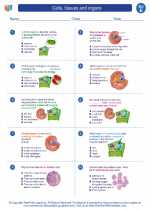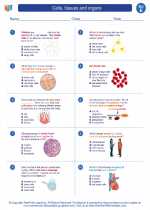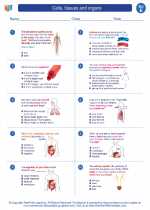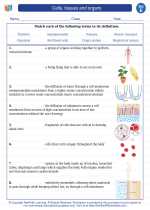Gold
Gold is a chemical element with the symbol Au (from Latin: aurum) and atomic number 79. It is a highly sought-after precious metal that has been used for coinage, jewelry, and other arts throughout recorded history. In this study guide, we will explore the properties, uses, and significance of gold.
Properties of Gold
Gold is known for its distinct properties:
- Color: Pure gold has a bright, yellow color.
- Shininess: It is highly reflective and does not tarnish.
- Malleability: Gold is highly malleable, meaning it can be hammered into thin sheets without breaking.
- Ductility: It is also highly ductile, meaning it can be drawn into thin wires.
- Density: Gold is very dense, making it heavy for its size.
Uses of Gold
Gold has a wide range of uses:
- Jewelry: One of the most common uses of gold is in jewelry making due to its beauty and resistance to corrosion.
- Coinage: Gold has been used as a standard for monetary systems throughout history and is still used in some bullion coins and commemorative coins.
- Electronics: Gold is a highly efficient conductor of electricity, making it valuable in electronic devices.
- Medicine: It is used in some medical treatments and is being researched for potential applications in cancer treatment.
Significance of Gold
Gold holds significant cultural and economic importance:
- Cultural Symbolism: Gold has been revered as a symbol of wealth, luxury, and power in many cultures and religions.
- Economic Value: Gold is considered a safe investment and a hedge against inflation and currency fluctuations.
- Historical Significance: Throughout history, gold has played a central role in shaping economies, trade, and the rise and fall of civilizations.
Conclusion
Gold's unique properties, diverse uses, and cultural significance make it a fascinating subject for study. Whether it's admired for its beauty, valued for its practical applications, or revered for its historical and cultural significance, gold continues to hold a special place in human society.
.◂Science Worksheets and Study Guides Fifth Grade. Cells, tissues and organs
Study Guide Cells, tissues and organs
Cells, tissues and organs  Worksheet/Answer key
Worksheet/Answer key Cells, tissues and organs
Cells, tissues and organs  Worksheet/Answer key
Worksheet/Answer key Cells, tissues and organs
Cells, tissues and organs  Worksheet/Answer key
Worksheet/Answer key Cells, tissues and organs
Cells, tissues and organs  Vocabulary/Answer key
Vocabulary/Answer key Cells, tissues and organs
Cells, tissues and organs  Vocabulary/Answer key
Vocabulary/Answer key Cells, tissues and organs
Cells, tissues and organs  Vocabulary/Answer key
Vocabulary/Answer key Cells, tissues and organs
Cells, tissues and organs  Vocabulary/Answer key
Vocabulary/Answer key Cells, tissues and organs
Cells, tissues and organs  Vocabulary/Answer key
Vocabulary/Answer key Cells, tissues and organs
Cells, tissues and organs  Vocabulary/Answer key
Vocabulary/Answer key Cells, tissues and organs
Cells, tissues and organs 

 Worksheet/Answer key
Worksheet/Answer key
 Worksheet/Answer key
Worksheet/Answer key
 Worksheet/Answer key
Worksheet/Answer key
 Vocabulary/Answer key
Vocabulary/Answer key
 Vocabulary/Answer key
Vocabulary/Answer key
 Vocabulary/Answer key
Vocabulary/Answer key
 Vocabulary/Answer key
Vocabulary/Answer key
 Vocabulary/Answer key
Vocabulary/Answer key
 Vocabulary/Answer key
Vocabulary/Answer key

The resources above cover the following skills:
Fifth Grade: Patterns; Scale, Proportion, and Quantity
Physical Sciences: Students develop an understanding that changes can occur to matter/objects on Earth or in space, but both energy and matter follow the pattern of being conserved during those changes.
Physical Science Standards
Analyze and interpret data to explain that matter of any type can be subdivided into particles too small to see and, in a closed system, if properties change or chemical reactions occur, the amount of matter stays the same.